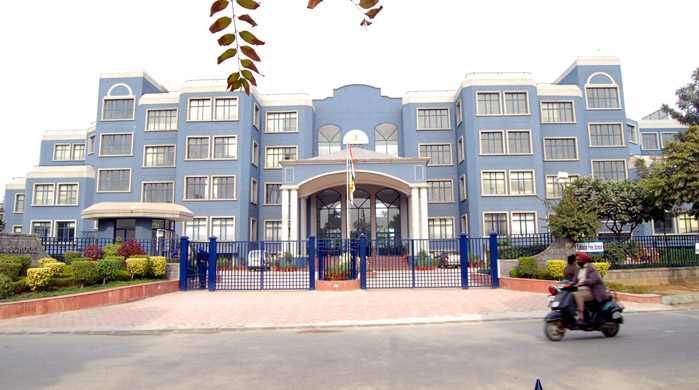
Urbanization
What is the concept of Urbanization and sustainable urbanism:
Over the past few centuries, the world population has increased dramatically and our economies have become more industrialized. Many more people have relocated to cities as a result. We call this process “Urbanization”.
Urbanization comes at a cost. According to present forecasts, urbanization and population growth would cause the building sector’s worldwide energy consumption to increase two to three times by 2050, with corresponding increases in emissions. It is difficult to understand how this urbanized world can be sustainable when huge cuts in energy usage and CO2 emissions are required to meet global environmental standards.
The interaction between transportation and the environment is a crucial component of urban sustainability. The bulk of the world’s megacities has transportation infrastructure and practices that are to blame for several environmental issues, such as air pollution, a greater reliance on fossil fuels, and urban sprawl, which is frequently held accountable for the unplanned suburban land development and concurrent rise in energy consumption. Therefore, it makes sense to incorporate nonmotorized transportation into the range of choices that will aid in the development and planning of sustainable megacities.
Both the study of cities and the strategies used to create them, known as sustainable urbanism, are concerned with promoting the long-term viability of urban areas by lowering consumption, waste, and negative effects on people and the environment while improving both. The physical, ecological, economic, social, health and equitable aspects of cities and their inhabitants are all components of well-being.
Practices Needed for Sustainable Urbanism:
- Waste management system
- Infrastructure for electric vehicles
- Rainwater drainage system
- Vertical farming
- Use of solar energy
- Use of sustainable materials
- And so on…
We interpret the ideas about the solutions but what about the course of action?
The Wonders of Green Buildings:
Green buildings are the structures that lead to more sustainable and efficient urban planning. Sustainable buildings play a crucial role in sustainable urban development, which aims to mitigate climate change, by reducing their energy and water use. Below is an overview of some of the green structures that are leading the way toward more responsible urban development, ranging from innovative museums to massive skyscrapers.
1. California Academy of Sciences, USA
2. World Trade Center, Bahrain
3. Iberdrola Tower, Spain
4. Pixel Building, Australia, and so on…
These were the examples of green buildings. Does India too have any green buildings that could commence sustainable urbanization?
Rajkumari Ratnavati Girls School, Rajasthan, India
Rajasthan is well known for its historic hill forts and tourism. Behind the beauty of this state comes the lowest female literacy rate which is around 32%.
In the middle of the dunes of the Thar desert of Jaisalmer where the strong sandy winds break the silence, Rani Ratnavati Girls School is standing gracefully. The uniqueness of the school is not only the phenomenal architecture but the aim behind it. The school is meant for the education of underprivileged girls and a skill development curriculum for women. The school is the perfect combination of Indian traditions, culture, and Western ideas. This school is the wholesome package of sustainability. How?
Architecture of the school:
The school is built to beat the extreme climate conditions where the average temperature is around 50 degrees Celsius. The architecture was designed by a New York-based architect Diana Kellogg. The building has Indian craftsmanship and Western minds.
The Shape of the building is oval which controls the wind, circulates the cool air, works as a cooling panel, and depicts femininity. The natural ventilation is harnessed by the aerodynamics of the oval shape. The temperature inside is 10% cooler than the outside and the maximum sunlight is filtered through the windows (Traditional Rajasthani Jali) of this architectural marvel.
The ceiling is kept high because scientifically the ceiling is higher the cooler the room. Pieces of recycled broken tiles are placed on the roof of the building which prevents the heat from getting down in classrooms and it reflects the sunlight. The ceiling is plastered with lime which is a natural coolant. During the winter the building traps the hot air and keeps the building warm. Despite of scorching heat, the building does not need air conditioners.
Moreover, the solar panels are placed at the top of the building to produce electricity and the panels work as shade as a playing or sitting area.
In the water-parched desert the building harvests around 2 and a half lakh Liters of rainwater for its needs through traditional spouts.
The show stopper is the material used to build the architecture is the yellow sandstones. The complete building is constructed with stand stones which are an important source material in Rajasthan.
Is sandstone sustainable?
Sandstone is the most eco-friendly and sustainable building material and provides benefits like low environmental effects, abundance, durability, and recyclability. For the duration of its life cycle, sandstone has little effect on the environment. In order to ensure proper quarrying operations and minimize ecological and habitat effects, extraction techniques have developed over time. Sandstone’s environmental credentials are enhanced by its minimal carbon footprint during manufacture when compared to other building materials. The sandstone protects from heat during the day and keeps it warm during cold nights.
Here there is an abundance of sandstone in the area hence transport is avoided and hence carbon emission is minimal. In a nutshell, this structure is eco-friendly as well as it provides education.
Final Thoughts:
Sustainability is important if we want to live a healthy life or else there are plenty of challenges on their way. If a building like Rani Ratnavati Girls School can be built in rural areas where services are difficult to get, then it’s not so difficult to build structures like these in urban areas where access to resources and manpower is easy to get. In addition to that, green buildings can be built according to the geography of the area to reduce transport or other pollution-causing practices.
By: Shweta Manohar Lohar
Write and Win: Participate in Creative writing Contest & International Essay Contest and win fabulous prizes.


